Starting collaboration with a new dental lab partner for implant cases requires structured preparation and early alignment. Success comes from defining clear requirements, standardizing case submissions, and integrating digital workflows so that both clinic and lab operate with shared expectations.
The biggest pain points often include unclear documentation, file incompatibility, communication gaps, and unpredictable turnaround times. These can be solved by standardizing digital case files, evaluating labs for certifications and implant expertise, and using secure platforms for updates and tracking. The result is fewer remakes, faster case delivery, and greater confidence in outcomes.
By following proven steps—from preparation and lab evaluation to workflow alignment, quality control, and procurement—you can turn a new collaboration into a reliable long-term partnership. Clear standards, transparent communication, and proactive risk management make implant case workflows more predictable, efficient, and sustainable.
What Preparations Are Needed Before Partnering with a Dental Lab?
Successful implant collaboration starts with clear preparation before the first case submission. Clinics that take time to define case requirements, standardize documentation, and involve the lab early typically see fewer remakes and smoother workflows. These steps set the foundation for predictable outcomes and a stronger long-term partnership.
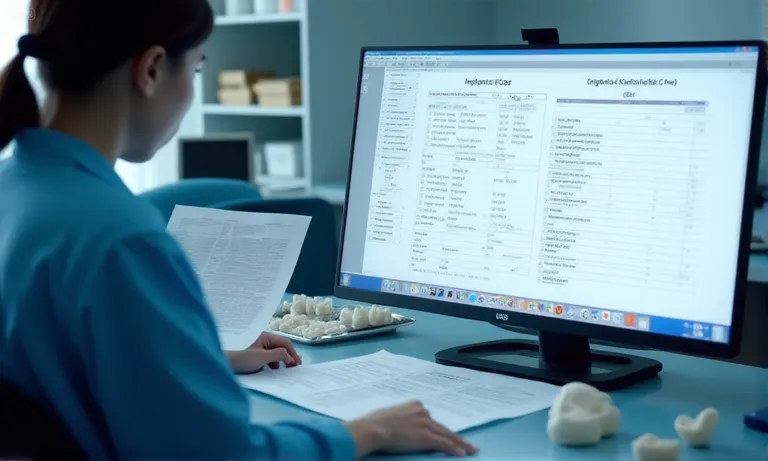
Dental-Lab-Case-Submission-Checklist
How to define implant case requirements clearly (materials, turnaround times, expectations)
Clear case definition avoids delays and miscommunication. Before submitting a case, the clinic should specify:
- Materials: Whether zirconia, e.max, or PFM is required, and why the selection matters.
- Turnaround: Expected delivery timeline, factoring in shipping and possible remakes.
- Aesthetic and functional expectations: Shade range, emergence profile, occlusal scheme.
In one collaboration, a U.K. clinic initially requested a zirconia bridge without specifying the shade system. The lab had to clarify midway, causing a four-day delay. After standardizing a form that required shade entry, later cases were delivered on schedule. This illustrates how clear upfront definitions prevent unnecessary back-and-forth.
What documents, visual aids, and digital files should be standardized for lab submission
Standardized submission ensures every case arrives with consistent information. Key elements include:
- Digital impressions or scans in compatible formats (STL, DCM).
- Photos showing shade tab references and soft tissue context.
- Annotated treatment plans or diagrams highlighting margin lines and implant positions.
- Completed lab forms detailing abutment type, restoration material, and delivery deadline.
Some overseas dental labs now provide online portals where clinics can upload files and automatically check for missing information. This minimizes errors at intake and speeds up the production cycle.
Why involving the lab early in treatment planning reduces errors and improves outcomes
Early involvement transforms the lab into a true collaborator rather than a passive fabricator. By sharing diagnostic wax-ups, implant placement plans, or provisional designs, the lab can advise on material feasibility, required scan bodies, or screw-retained vs. cement-retained choices.
One small DSO in Canada involved their lab before a complex anterior implant case. The lab flagged that a screw-retained design would provide better retrievability given the bone angulation. The clinic adjusted the plan, reducing the chance of future complications. This type of proactive input is only possible when the lab is engaged at the planning stage.
When preparations are handled with this level of clarity, both clinic and lab save time, reduce remakes, and enter collaboration with shared expectations. Partnering with an experienced overseas dental lab that supports standardized submission formats can make this transition much smoother.
How to Evaluate and Select the Right Dental Lab Partner
Choosing the right dental lab partner is not just about price; it is about reliability, technical capacity, and compliance. A lab with strong digital capabilities, proven materials, and recognized certifications reduces clinical risk and ensures consistent outcomes. Evaluating these factors systematically allows clinics to make confident, long-term decisions.
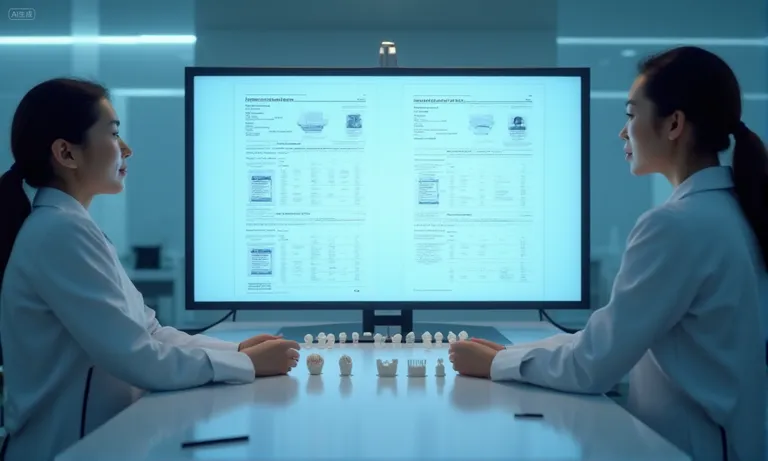
Dental-Lab-Selection-Criteria-Comparison
What factors differentiate reliable implant-focused labs (digital capabilities, materials, reputation)
Reliable implant labs share three characteristics:
- Digital integration: Ability to handle STL, DCM, and 3Shape files smoothly, with minimal compatibility issues.
- Material expertise: Consistent quality across zirconia, e.max, and titanium restorations, with traceable sourcing.
- Reputation and references: Peer recommendations, published case studies, or long-term client relationships.
One independent clinic in Australia tested three labs. Only the one with full CAD/CAM integration could return abutments without manual adjustments, saving the clinic hours of chairside work. Such differences directly impact daily efficiency.
How to compare overseas vs. local lab options for cost, logistics, and reliability
Overseas and local labs each bring distinct advantages. A structured comparison helps clinics decide:
| Criteria | Overseas Dental Labs | Local Dental Labs |
|---|---|---|
| Cost | Often lower due to economies of scale | Typically higher due to local labor and overhead |
| Logistics | Requires shipping, customs, and longer lead times | Faster delivery, easier coordination |
| Reliability | Standardized large-scale processes, consistent output | Close proximity allows real-time issue resolution |
| Complex cases | Can provide specialized implant expertise | Easier chairside adjustments but may lack niche expertise |
A DSO in Germany initially preferred a local lab for speed. However, after experiencing high remake rates, they shifted complex implant cases to an overseas partner, where stricter digital QA protocols reduced errors despite longer shipping times.
Which certifications (CDL, DAMAS, ISO 13485) ensure compliance and consistent quality
Certifications are more than formality—they signal whether a lab can maintain consistency under scale.
- CDL (Certified Dental Laboratory): Confirms adherence to recognized standards in the U.S.
- DAMAS (Dental Appliance Manufacturers Audit System): Ensures documented quality processes and traceability.
- ISO 13485: The global benchmark for medical device quality systems, critical for implant restorations crossing borders.
Clinics working with ISO-certified partners often report fewer compliance issues during audits and smoother insurance reimbursements. An overseas dental lab with ISO 13485 provides peace of mind that both production and documentation meet international medical device standards. For more background, see ISO 13485 certification requirements.
Evaluating a lab through these lenses—digital workflow, material expertise, reputation, logistics trade-offs, and certifications—helps clinics select partners that not only meet immediate needs but also scale with future implant demand.
How to Align Digital Workflows and Communication from the Start
Smooth digital integration is one of the most decisive factors in avoiding costly remakes. When clinics and labs align CAD/CAM workflows, secure communication platforms, and clear turnaround expectations from the beginning, they reduce miscommunication and gain predictability. Establishing this alignment upfront ensures that technical precision is matched with reliable collaboration.
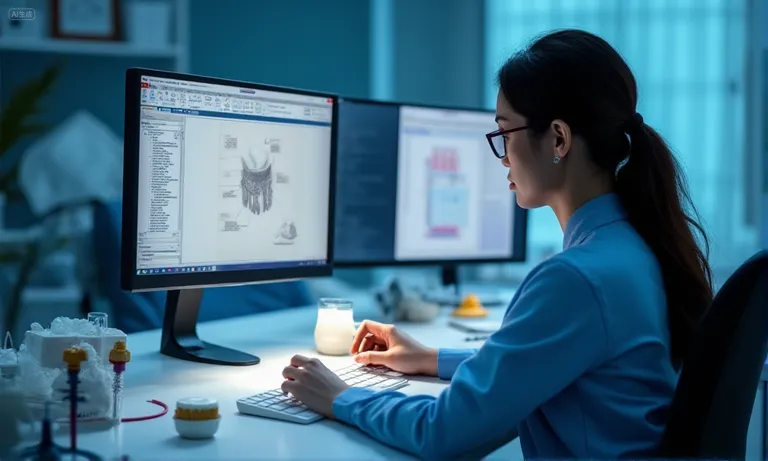
Dental-Lab-Digital-Workflow-Integration
How to ensure CAD/CAM and file-format compatibility between clinic and lab
File compatibility is the foundation of digital collaboration. Before sending the first case, clinics should confirm that the lab accepts their preferred formats (STL, DCM, Exocad, 3Shape). Even minor mismatches can cause distorted margins or missing scan data.
In practice, one clinic in France submitted intraoral scans in proprietary DCM format. Their overseas lab’s software initially misread gingival contours, leading to an inaccurate emergence profile. After both sides tested cross-compatibility and set up a shared conversion protocol, the error rate dropped to near zero. Such proactive alignment prevents hidden risks from disrupting production.
Which secure platforms or channels enable real-time updates and case tracking
Clear communication reduces back-and-forth emails and lost updates. Clinics increasingly rely on:
- Secure case portals: Upload files, auto-check completeness, and view production status.
- Encrypted chat platforms: HIPAA/GDPR-compliant tools to discuss case adjustments in real time.
- Shared dashboards: Allow both clinic and lab to track shipment, turnaround, and remake requests in one view.
Some global dental labs integrate tracking into their portals, so clinics see real-time updates alongside logistics status. This eliminates uncertainty and gives clinicians confidence that cases are progressing as planned.
How to set turnaround expectations, regular check-ins, and feedback loops
Turnaround is not only about delivery dates—it is about rhythm and feedback. A reliable alignment process often follows three steps:
- Define case categories: e.g., single crown = 7 days, multi-unit bridge = 10 days, full-arch = 14 days.
- Schedule check-ins: Weekly or biweekly calls to review ongoing cases and flag bottlenecks early.
- Build feedback loops: Every remake or adjustment is logged, reviewed, and used to refine submission standards.
One independent practice in the U.S. adopted this cycle with its overseas lab. Within two months, remake rates dropped by 15% because small issues were caught early and corrected systematically.
When labs and clinics align workflows from the start—technically, digitally, and communicatively—both sides benefit from fewer disruptions and higher trust. Working with an overseas dental lab that offers CAD/CAM compatibility checks and secure communication platforms can make digital collaboration significantly more reliable.
What Quality Control and Risk Management Steps Should Be in Place
Quality assurance and risk management are not afterthoughts—they are safeguards that determine whether a partnership is sustainable. Defining remake policies, implementing standardized checks, and preparing for potential delays or miscommunication protect both the clinic and the lab. When these systems are visible from the start, trust builds faster and problems are resolved with less disruption.
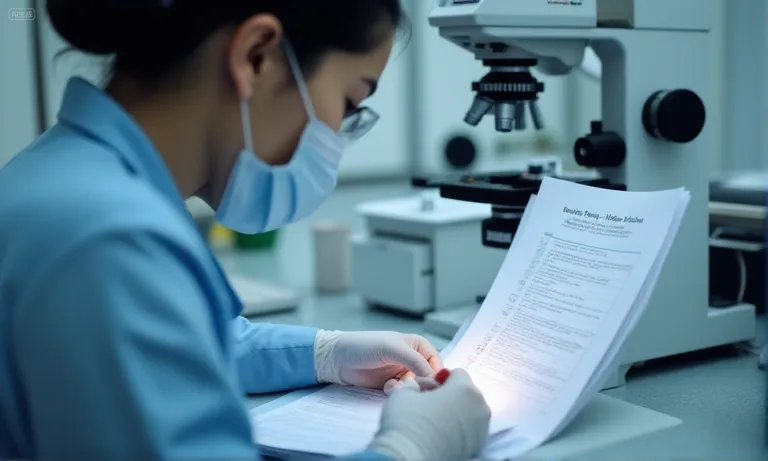
Dental-Lab-Quality-Control-Checklist
How to understand remake policies, QA protocols, and adjustment workflows
Every lab should have a transparent policy for remakes and adjustments. A clear remake policy defines turnaround time for corrections, whether shipping costs are covered, and what documentation is required. QA protocols—such as independent shade verification or margin checks—ensure errors are caught before delivery.
A U.S. clinic once faced repeated crown adjustments because its local lab lacked written remake terms. After moving to an overseas dental lab with documented QA protocols and remake guarantees, turnaround stabilized and frustration decreased. This shows that clarity on policies is not optional—it is foundational.
What standardized checks (shade validation, fit verification) minimize errors
Standardized checks reduce variability across cases. Clinics should ask whether the lab consistently applies:
| Standardized Check | Purpose | Risk Avoided |
|---|---|---|
| Shade validation with photos + digital tools | Confirms esthetic accuracy before fabrication | Prevents mismatched crowns |
| Margin/fit verification under microscope | Ensures accurate seating and emergence profile | Reduces chairside adjustments |
| 3D printed verification model | Confirms occlusion before final milling | Avoids remake from occlusal discrepancies |
Labs that formalize these checks typically deliver fewer remakes and faster adjustments, even under heavy workloads.
How to handle risks like delays or miscommunication in early-stage collaboration
Risk control means expecting the unexpected. Clinics can mitigate common risks by:
- Agreeing on contingency buffers: Build 2–3 days into timelines for overseas shipments.
- Using dual communication channels: Combine portal updates with direct chat to avoid missed messages.
- Documenting every exception: Logging delays, shade mismatches, or remake incidents to identify recurring patterns.
One Canadian DSO initially underestimated customs clearance delays, leading to patient rescheduling. After implementing a standardized buffer policy with its overseas lab, unplanned disruptions decreased significantly.
When remake policies, standardized checks, and risk buffers are embedded into the workflow, collaboration becomes less fragile. Partnering with a global dental lab that shares transparent QA protocols provides assurance that clinical schedules will not collapse under preventable errors.
How to Establish a Smooth Procurement and Reorder Workflow
A streamlined procurement system is what transforms a one-off order into a long-term collaboration. Standardized submissions, efficient logistics, and consistent reorder practices reduce friction and make both sides confident about scaling up. When these workflows are clarified early, clinics can focus on patient care instead of paperwork and shipping uncertainties.
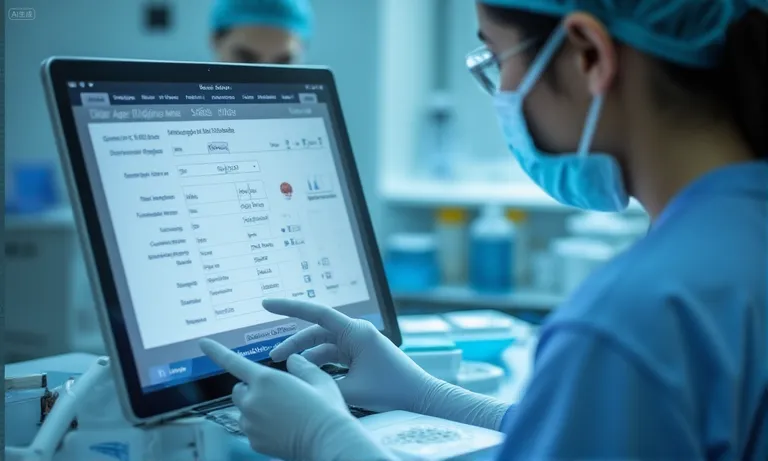
Dental-Lab-Order-Submission-Workflow
What a standardized order submission process looks like—from request to quote
Order submission should be predictable and repeatable. A typical process includes:
- Case request: Clinic uploads scans, photos, and case notes into the lab’s portal.
- Quote confirmation: Lab reviews the details and confirms price and turnaround.
- Production start: Once approved, the case moves into milling or layering.
- Shipping arrangement: Tracking number issued when production passes QA.
- Delivery and feedback: Clinic verifies fit and records any adjustments.
One European distributor cut average turnaround by two days after implementing this standardized five-step process with its overseas dental lab. Consistency eliminated hidden delays between request and approval.
How to manage shipping, customs, and regional logistics effectively
Logistics are often underestimated, especially in cross-border workflows. Clinics should prepare for:
- Shipping carrier selection: Reliable couriers with healthcare logistics experience reduce breakage or delays.
- Customs documentation: Accurate HS codes and clear invoice details speed clearance.
- Regional warehousing: Some global labs maintain satellite distribution hubs to reduce shipping time.
- Emergency cases: Agreeing on priority shipping protocols ensures critical cases are not delayed.
When these steps are defined, clinics can maintain predictable patient scheduling even when shipping across continents.
How to foster long-term partnerships with consistent pipelines and trust
Reorder workflows are more than logistics—they are a trust-building mechanism. By setting up consistent pipelines, clinics and labs reduce negotiation time and improve cost transparency. Reliable reorder mechanisms also provide the lab with predictable volume, which often results in better pricing and priority handling for the clinic.
One small chain in the U.K. established a monthly batch order system with its global dental lab. This predictability gave the lab the ability to allocate capacity in advance, while the clinic gained priority slots for urgent cases. Over time, this routine strengthened collaboration into a true partnership.
When procurement and reorder workflows become systematic, both sides save time, reduce stress, and unlock the ability to grow together. Working with an overseas dental lab that offers structured submission portals and regional logistics support can make procurement smoother at every stage.
Conclusion
Building a smooth collaboration with a new dental lab partner requires more than sending cases—it requires preparation, careful selection, digital alignment, quality safeguards, and consistent procurement routines. Clinics that standardize submissions, evaluate partners by certifications and reputation, and involve labs early in planning see fewer remakes and faster, more predictable outcomes.
As an overseas dental lab, we understand that trust is earned through clear workflows, transparent quality control, and reliable logistics. When these elements are in place, both clinics and labs can focus on what matters most: delivering accurate, durable restorations to patients without disruption. Choosing the right partner ensures today’s efficiency becomes tomorrow’s long-term stability.


